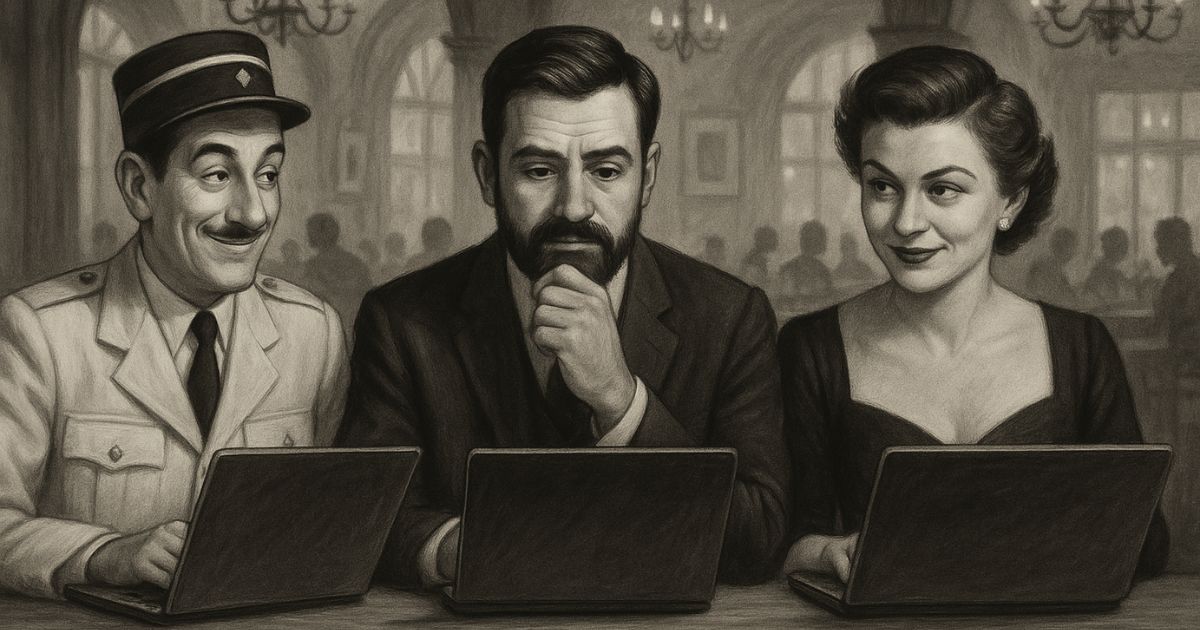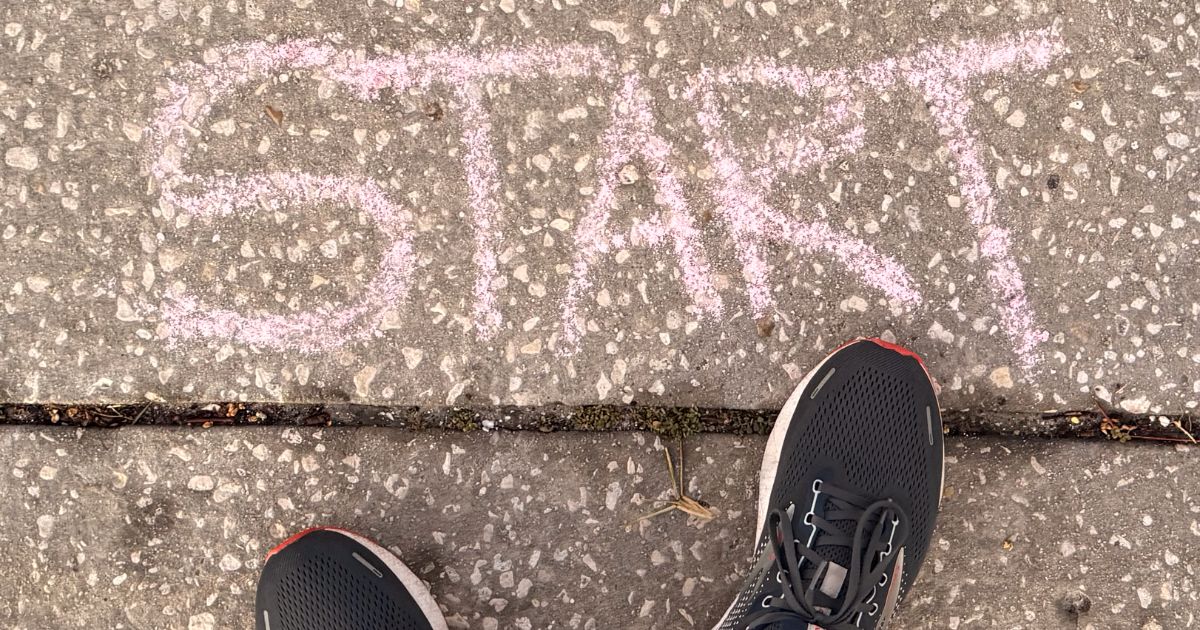I’m relying on ChatGPT more these days, even though I don’t know if it’s my Louis Renault or my Eve Harrington.
Renault is the flawed police captain who emerges as Rick Blair’s ally at the end of Casablanca. And Harrington—the Eve in All About Eve—earns Margo Channing’s trust just before pushing her into obscurity.
Since I don’t know yet how the plot unfurls, I’m approaching ChatGPT with a maximum of hope and a minimum of naiveté. I’m cynical about its ability to create things, but idealistic about its ability to help me create things.
With that in mind, I’m cautiously allowing ChatGPT to review content, organize information, and be a sounding board—but not to generate the type of content I can create myself.1
Here are the four supporting roles ChatGPT plays for me. (I’ve also included a note at the end about sharing sensitive information with ChatGPT. Spoiler alert: Don’t.)
Global Eye for the Marketing Guy
I haven’t provoked an international incident yet, and I’d like to keep it that way.
When I’m creating marketing materials for global distribution, I use ChatGPT to help ensure they’re understandable and unproblematic, regardless of where they’re used.
Here’s the prompt I use:
Review this text. Flag any idioms, cultural references, phrasing, or content that may be unclear, misinterpreted, or raise cultural concerns for a global audience, including fluent non-native English speakers. Explain the reason for each flagged item. Ignore regional differences in punctuation, spelling, and grammar.
Making Sense of My Scrawlings
Like a resourceful chef with a pile of leftovers in the kitchen and a Michelin inspector in the dining room, ChatGPT transforms handwritten notes into clear summaries, outlines, and action items.
When I have notes from a meeting, training, or presentation, I use a prompt like this:
Please review the uploaded notes, which were taken during [insert brief context, e.g., “a webinar about email marketing best practices”]. Summarize the main themes and key points, and include any relevant supporting information, recommendations, or action items. Present the output in bullet points organized by theme or section. Base your response only on the content of the notes; do not generate or infer anything that is not explicitly written.
Be sure to replace the bracketed text.
When I have ideas—or idea fragments—mixed in with other information and scattered across multiple pages, I use a prompt like this:
Please review all uploaded images of handwritten notes and extract only the content explicitly tagged with terms like “blog,” “blog post,” “blog idea,” or similar. Ignore all other content. If related fragments appear across multiple notes, combine them only if the connection is clearly supported by what’s written. Provide a list of all identified blog ideas, each with a short, descriptive title. If there is enough information in the notes to support it, include a brief outline or summary for each idea. Do not generate new ideas or add content beyond what is written in the notes.
A Soundingboard That Never Sleeps
I don’t want ChatGPT to write for me—but it’s pretty good at helping out when there’s no one nearby to bounce ideas off of.
When I’m struggling to rewrite a stubborn heading, subject line, or paragraph and about to give up, I’ll share what I’ve done so far with ChatGPT and use this prompt:
Review the following text and provide feedback as a copy editor or marketing colleague would. Offer objective suggestions to improve clarity, tone, structure, and effectiveness, based on the intended purpose or audience. Identify what’s working and what could be improved. Suggest specific edits or alternatives that enhance readability or impact, but base all suggestions strictly on the content provided. Do not generate new material unless explicitly asked to do so.
Audience: [Audience]
Type of content: [Blog post title, email subject line, intro paragraph].
Goal: [Improve flow, simplify it, shorten it, make it more persuasive].
Be sure to change the bracketed text.
A Master—and Meta—Prompt Writer
I didn’t write any of the prompts above. ChatGPT did.
Getting the results you want from ChatGPT can be an iterative process. It often requires more prompts—and time and effort—than I anticipated. This is when I use ChatGPT to generate new content instead of helping me refine and organize mine.
To reduce the back-and-forth in the future, I ask ChatGPT to reverse-engineer the conversation and create a reusable prompt.
Here’s the prompt I use:
Based on this entire conversation—including the original prompt, all follow-up prompts, your interim responses, and the final result—create a single, reusable prompt that captures the intended outcome, tone, structure, and constraints of this request. The goal is to allow this task to be repeated in the future without requiring iterative refinement. The resulting prompt should be clear, specific, and functional in a new session with no shared memory or prior context.
ChatGPT wrote that prompt.
Out of curiosity, I asked ChatGPT about the meta-ness of the request: a prompt to write a prompt that would be used in future prompts. It called it “one infinite loop of polite existential recursion.”
Does that sound like something Louis Renault would say—or that Eve Harrington would? I don’t know. We’ll have to keep watching to see how things play out.
An Important Note on Sensitive, Proprietary, and Competitive Information
Do you know where your data’s going to?
Do you like the places it may be flowing to?
First, apologies to Diana Ross. Second, let’s acknowledge that ChatGPT raises legitimate concerns about data use and retention.
The best way to ensure that personal information, proprietary data, and intellectual property—yours, your employer’s, and your clients’—aren’t at risk is not to share them with ChatGPT.
For work, I only use ChatGPT for writing support and brainstorming. I treat it like someone who hasn’t signed an NDA. The decision tree is simple:
Question: Could someone find this information on our website?
- Yes: OK to share with ChatGPT
- No: Not OK to share with ChatGPT
The verboten list includes (but isn’t limited to):
- Operations
- Strategy
- Clients
- Financials
- Pricing
- Performance
- Legal issues
- Product development
I also turn off ChatGPT’s chat history for an added layer of security.
Footnote
- The featured image for the blog post was created by ChatGPT. This is not something I could have created myself, as my drawing abilities are limited to comically misshapen stick figures. ↩︎


